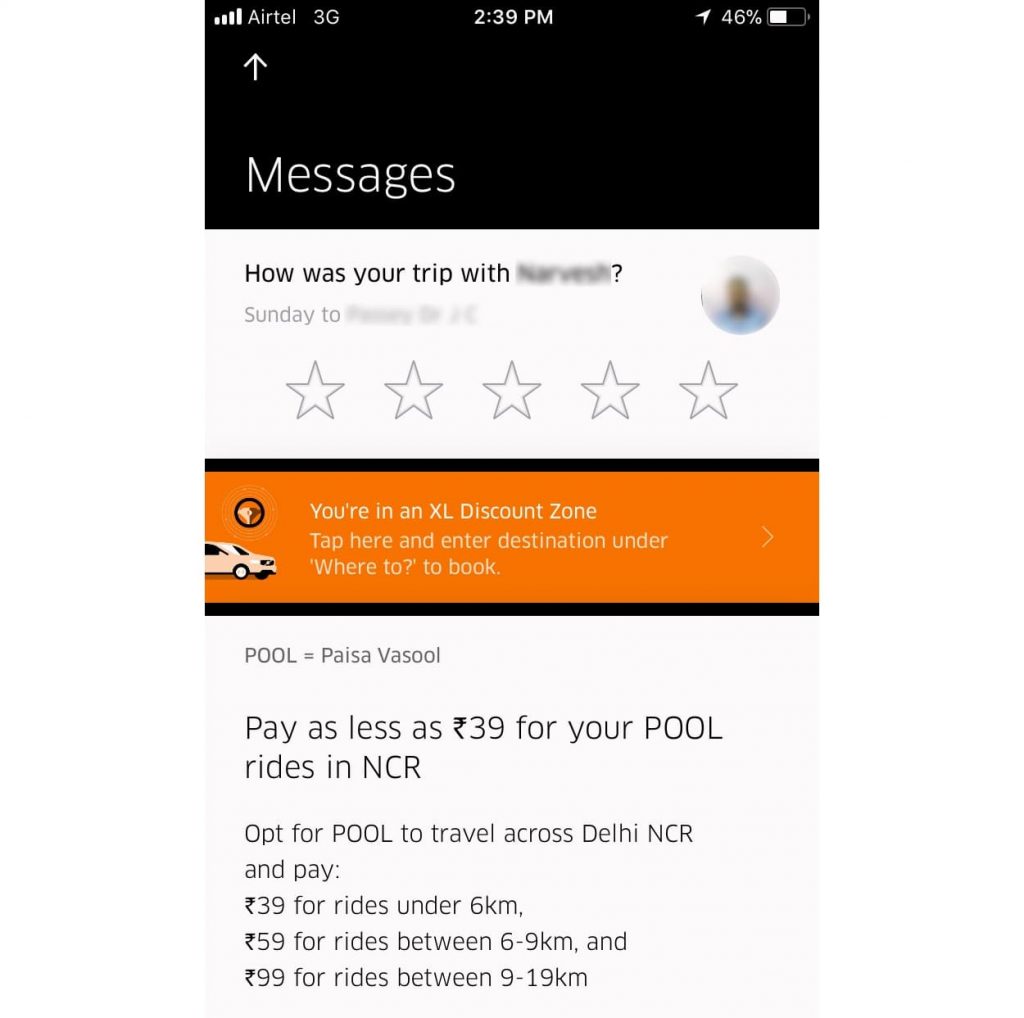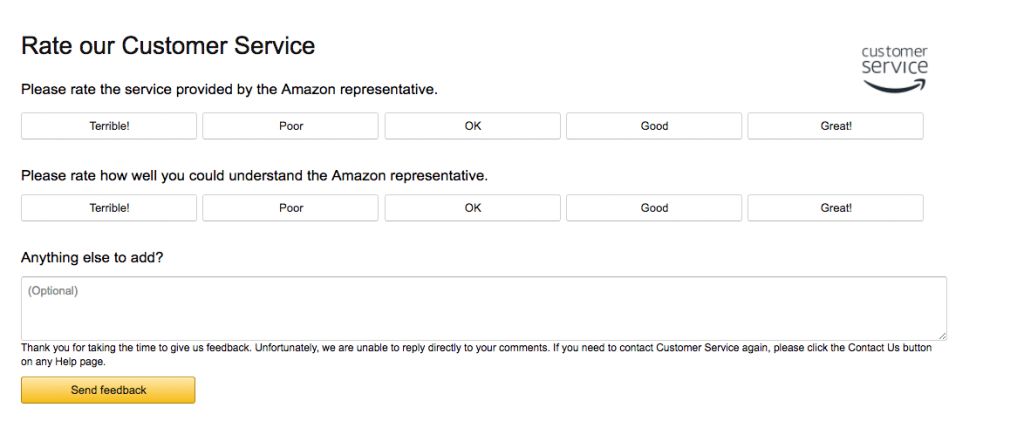 We’ve all take or abandoned a survey. Many surveys are unclear and poorly written, making it challenging to complete them because they’re so dull. Many dedicated customers open them in good faith because they’d like to provide insight about products or the website, but unfortunately, some companies only do surveys with the intent to attain positive reviews. There is an art to developing a survey that customers will not abandon. Crafting the ideal survey is vital to improving a business because receiving helpful feedback can assist a company in making a list of ways they can improve. Below are some ways to develop ideal customer satisfaction surveys and what companies should avoid doing.
We’ve all take or abandoned a survey. Many surveys are unclear and poorly written, making it challenging to complete them because they’re so dull. Many dedicated customers open them in good faith because they’d like to provide insight about products or the website, but unfortunately, some companies only do surveys with the intent to attain positive reviews. There is an art to developing a survey that customers will not abandon. Crafting the ideal survey is vital to improving a business because receiving helpful feedback can assist a company in making a list of ways they can improve. Below are some ways to develop ideal customer satisfaction surveys and what companies should avoid doing.
You might be wondering why it’s so important to monitor customer satisfaction, and Hubspot Blog provides an excellent summary on why it’s vital to craft compelling surveys for your business:
New companies are starting up every day, and competition is in abundance. One of the differentiating factors is what your consumers think about you. Big companies like Apple are thriving on taking their customer's needs into consideration, and adding new and requested innovative features to their products.
Customers share good experiences with an average of 9 people and poor experiences with about 16 (nearly two times more) people — so it's imperative you figure out customer issues and try your best to solve them before they go viral on Yelp or social media.
If you’re crafting a survey based on website and navigation, then Comm 100 recommends asking your subscribers the following questions:
If someone told you your website or web presence was compromised in any way, wouldn’t your first order of business be to fix it?
Unfortunately, what your site lacks may be invisible to you and your staff. Even if your site is fully functional, something may be keeping your visitors from navigating it with ease, which leads them to stumble confused through FAQs, or to abandon items in their cart.
The following will help you assess whether or not your online platform is up to par:
Was the website easy to navigate?
Were you able to find the support/information you needed easily?
Did the website load efficiently?
Were you able to locate products/services/information without assistance?
Do you find that the X feature is easy to use?
Survey Monkey knows best when it comes to creating the best surveys, which is why in particular, they recommend the below tips.
Stay unbiased.
It’s hard to be objective when you think your customer service is outstanding. Take a step back from what you think you know and let your shoppers do the talking. Avoid embellishing your questions with superlatives, such as, “What do you think of our friendly customer service representatives?” This is a leading question, and isn’t likely to provide accurate results. Instead, ask a focused question about an aspect of your customer service, such as, “How quickly did the customer service representatives at our company help you?”
Avoid the hypothetical.
It’s hard for most people to accurately determine what they may or may not do in a hypothetical situation. Don’t fabricate customer service “what if” situations that may not have happened to the respondent. Focus on situations that accurately portray real-world customer service issues. Use a Likert Scale rating question to ask customers to rate their experiences.
Use painless questions.
If your participants have to read questions several times in order to understand them, or if they’re repeatedly asked to write essay-like responses, you’ll end up with a lot of abandoned questionnaires. Write questions that are easily scanned and answered without having to think too much or take a lot of time. A question like, “How responsive is our company?” is much easier to read and answer than, “If you have used our website, phone system, or email help system in the past, did our customer service representative get back to you in a timely manner?”
Examples of what has worked are sometimes the most helpful, and HubSpot included a few. Here are two in particular, below.
Uber has two customers — the drivers and the passengers — and it does a great job collecting opinions and reviews from both. The passengers give ratings after every ride, and the drivers rate the passengers as well.
This makes it fair and transparent for both kinds of “customers,” and these ratings affect the drivers' and passengers' reputation as well. If a passenger has a lower rating, the driver has the authority to decline the booking.
Amazon seems to be exceeding user expectations by collecting all kinds of information and making these easily accessible such that users can find the answers themselves in a knowledge base to provide customers with self-service support. This reduces the chances of incorrect purchases, which can make all the difference in a customer's buying decisions.
If there’s one crucial question that you should ask, then it’s what a customer would change about your website or product. Figuring out their needs and what you need to change to make it easier to navigate your shop is imperative if you want to keep customers around. LiveChat elaborates more on this vital survey question:
“If you could change just one thing about our product/service, what would it be?”
This question is awesome in terms of finding out what are your customers’ pain points. It also shows your customers that you care about their opinion and their voice is important to you (now, they like you even more!).
In some cases, people will comment on features they would like to see on your website (and that’s great), and sometimes they provide you with ideas on how you should expand your business. Maybe you don’t need this info today, but who knows what tomorrow brings, right?
This question is also very handy when you do a market research. You can modify this query to gather information about your competition, for example:
“What’s the single biggest challenge you have encountered with your current mobile phone?”
“What’s the single biggest frustration you have experienced with your current accounting firm?”
“What’s the single biggest thing you wish you could change about your current TV provider?”
This way you can learn about weaknesses of your competitors and use them to your advantage.
Don’t overwhelm customers by asking them too many questions. Otherwise, they may abandon the survey altogether. That’s why Neil Patel recommends combining several issues into one comprehensive question that encompasses what you’re trying to ask your audience without overcomplicating matters.
How do you feel when someone asks you a string of questions, say 4 questions at one fell swoop:
How did you find our products? What results have you gotten by using our products? Which of our products do you find most beneficial and why?
You feel like the desperate interrogator wouldn’t let you finish your sentence, right?
That’s exactly how your respondents feel when you ask a chain of questions at once.
In addition, multiple questions make it hard for respondents to give you precise answers, which will in turn make it difficult for you to interpret and evaluate those answers.
In place of multiple questions, try combining all the questions to form one simple, yet all-inclusive question, without it losing its aim.
Next, we will be looking at some specific questions that can get you helpful answers.
These questions are very investigative and will help you discover your audience’s biggest problems. They’ll also help you know what product to create and what to share with your customers in your newsletters, walk-through guides, blogs, etc.
The truth is, as a business, your job is to solve problems and meet people’s needs, either by rendering a service, creating a product, or sharing helpful information and fresh content just as we do here at the Neil Patel blog.
And, you really cannot solve any problem without getting to know it first; thus, the importance of asking these kinds of questions.Question #1: What’s your biggest challenge in___?
Are there challenging situations that customers are facing right now in the area of your specialization? That’s what you need to find out, and your customers are the best people to tell you that.Question #2: What are your most burning questions about____?
You’ve been doing all the interrogations so far. Now, it’s time for customers to take their turn. The cool thing here is, sometimes, the most useful information can come to you through customer questions.Question #3: What’s not out there? What product/service/tool/app would you like someone to create?
That’s it! Absolute bluntness!
If you want to use only your own head to come up with product ideas, you may end up creating the wrong product – a product that won’t sell a piece, won’t make you a dime, and won’t solve a single problem. That’s a bummer!
If you think about it, timing is essential, especially when it comes to surveys. For example, if you prompt customers to take a survey right in the middle of the holiday season it’s likely it won’t happen. Figure out a time when you’ll be more likely to get results. Otherwise, Help Scout says your survey may just get ignored.
Interestingly, the Survey Monkey study found the highest survey open and click-through rates occurred on Monday, Friday and Sunday respectively.
There was no discernible difference between the response quality gathered on weekdays versus weekends, either, so your best bet is to seek out survey-takers first thing during a new week or to wait for the weekend. Perhaps Monday has such high response rates because nobody feels like working.
With regard to sending frequency: Companies might conduct customer surveys once a year, or at most, once per quarter. And while that’s great, it’s not enough to keep a pulse on customer satisfaction — you don’t want to wait 90 days to find out your customer is disgruntled. Between surveys, you’ll want to keep a keen eye on your customer satisfaction ratings and other metrics. Reporting tools (such as Help Scout reports) can help you turn every conversation with a customer into a feedback session.
Sources: Comm 100, Survey Monkey, HubSpot Blog, Neil Patel, Help Scout, LiveChat
[adrotate group=”5″]
CHALLENGE Yourself to Profit!
Free Download: Build Your Profit-Generating Online Business With This Free Blueprint
Sign Up, follow the easy steps and You'll get the tactics, strategies & techniques needed to create your online profit stream. It's free!
[adrotate group=”6″]



